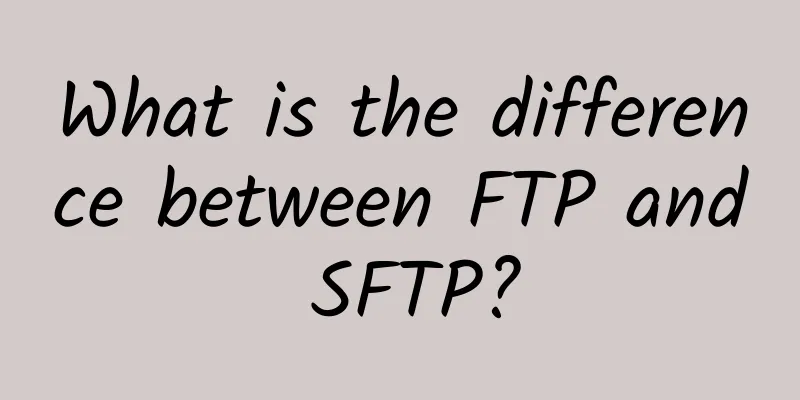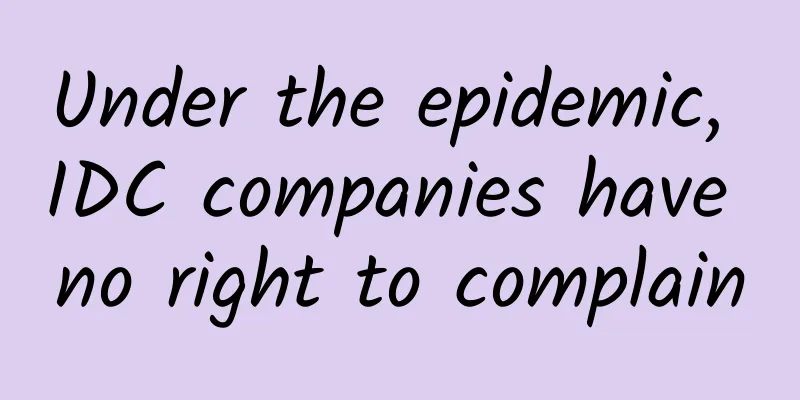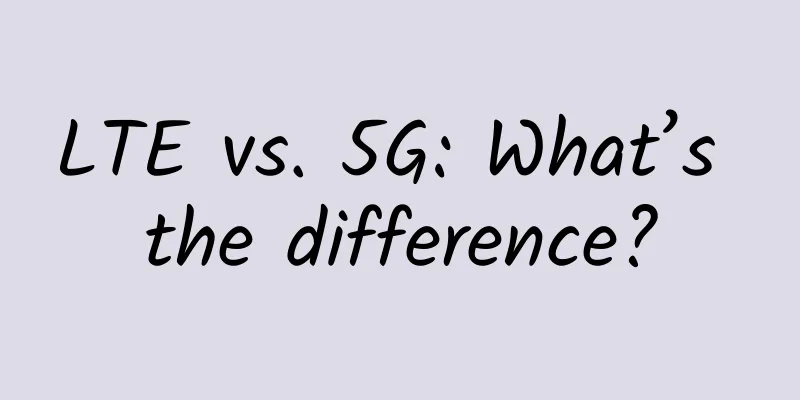What is the difference between FTP and SFTP?

|
In actual project development, the most commonly used file transfer methods are FTP and SFTP, but what are the characteristics of these two transmission methods? This article will discuss the differences between SFTP and FTP. 1. FTP protocol FTP is one of the protocols in the TCP/IP protocol suite. The TP protocol consists of two parts:
By default, the FTP protocol uses TCP ports 20 and 21. Port 21 is used to transmit control information, and whether to use port 20 as the data transmission port depends on the transmission mode used by FTP. If the passive mode is used, the specific port to be used is determined by negotiation between the server and the client. There are two FTP transmission modes:
1. Active mode The FTP client first establishes a connection with the TCP port 21 of the FTP server and sends commands through this channel. When the client needs to receive data, it sends the PORT command on this channel. The PORT command contains the port that the client uses to receive data. When transmitting data, the server connects to the client's specified port through its own TCP port 20 to send data. 2. Passive mode The establishment of control channel is similar to active mode, but after the connection is established, the Pasv command is used. After receiving the Pasv command, the FTP server randomly opens a high-end port (port number greater than 1024) and notifies the client of the request to transmit data on this port. The client connects to this port of the FTP server, establishes a channel through three-way handshake, and then the FTP server transmits data through this port. Note: Many firewalls are not allowed to accept connections initiated from the outside when they are set up, so many FTP servers located behind firewalls or in intranets do not support PASV mode, because the client cannot pass through the firewall to open the high-end port of the FTP server; and many intranet clients cannot log in to the FTP server in PORT mode, because TCP 20 from the server cannot establish a new connection with the client in the internal network, causing it to fail to work. 2. SFTP protocol
SFTP is the abbreviation of SSH File Transfer Protocol, a secure file transfer protocol. SFTP and FTP have almost the same syntax and functions. SFTP is a part of SSH and is a secure way to transfer files to the Blogger server. In fact, the SSH software package already includes a secure file information transfer subsystem called SFTP. SFTP itself does not have a separate daemon process. It must use the sshd daemon process (the default port number is 22) to complete the corresponding connection and response operations. So in a sense, SFTP is not like a server program, but more like a client program. 3. The main differences between the two
|
<<: In-depth analysis of the seven major communication protocols of IOT
>>: Kunpeng gathers data, shines in the Central Plains, and promotes the digital economy
Recommend
CERNET and Shengbang Security have reached a strategic cooperation, allowing colleges and universities to experience more efficient and convenient Web security governance SaaS services
[51CTO.com original article] On October 24, CERNE...
Network equipment and protocols: protocols
When visiting a website and sending or receiving ...
New campus, new vision - Guangzhou No. 6 Middle School creates a new highland of smart education with Ethernet color light
Guangzhou No. 6 Middle School is a famous key mid...
Industrial IoT challenges are daunting, and seven test platforms are particularly important
Smart factories, smart processes, smart grids, sm...
WiFi beginners guide: 4 things you need to know
Gone are the days of firing up our computers, plu...
edgeNAT Double Holiday Event: 20% off for monthly VPS and 30% off for annual VPS + free top-up
edgeNAT has announced a promotion for this year&#...
Overview of the Latest Data Center Network Architecture Technologies
The network is the most important part of the dat...
The 5G coverage of the three major US operators was accused of false advertising: Verizon can only be connected 9.7% of the time
5G communication networks are reportedly faster t...
Maxthon Hosting: 56 yuan/month Hong Kong CN2-2GB/40G SSD/300GB/15M Bandwidth
Aoyo Zhuji is one of the foreign hosting services...
Report: By 2025, 5G mobile phones will account for more than 50% of smartphone sales revenue
[[417906]] A new study by Juniper Research found ...
Huawei Nantong Cloud Platform is officially launched, and software development cloud reaches strategic cooperation
Today, Huawei Software Development Cloud entered ...
5G has entered its ramp-up phase, and this key factor determines its success or failure...
[[414891]] This article is reprinted from the WeC...
Google's OnHub routers will stop supporting software in December next year
Google announced today that it will stop software...
With costs increasing by 30%, will mobile phone prices rise across the board?
This year is the explosive growth period for 5G c...
“Unlimited” is just a cover. Which data card is the most cost-effective?
In order to use more affordable mobile data, I be...









